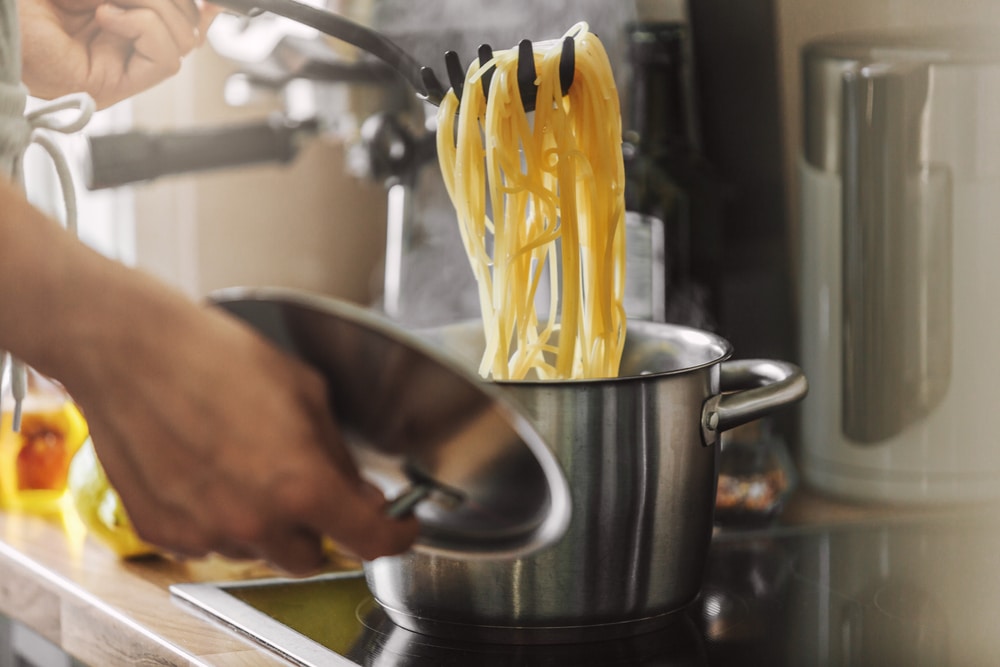Looking to perfect your pasta game? You’re in the right place. Get ready to discover the classic dos and don’ts of spaghetti preparation, as well as bust some myths and learn a few new facts that might surprise you.
In this guide, we’ll walk you through:
- The cooking times for pasta to make the perfect spaghetti
- Tips for cooking the best pasta and what pitfalls you should watch out for
- Alternative methods of cooking pasta that you can certainly try.
Let’s get cooking.
Cooking Time of Spaghetti: How to Make Your Pasta on Point

Cooking Time of Spaghetti
First things first: how long should you cook spaghetti to get a plate of firm and perfect pasta?
The answer actually depends on what type of pasta you’re cooking.
Fresh Pasta
It takes about three to five minutes to cook perfect fresh pasta in boiling water.
Cooking times will vary based on the size of the pasta, with thicker and bigger shapes taking longer than thinner smaller ones.
Pro Tip: You can tell when fresh pasta has finished cooking because it will float to the top of the water.
Dried Pasta
Dried pasta cooks for around eight to ten minutes.
Make sure to test a strand of your spaghetti to see if it’s done to your liking before taking the pot off of the heat.
Must-Dos for the Perfect Pasta
Aside from being mindful of the right cooking times, there are also plenty of other things that you can do to ensure that you’ll always have a perfect plate of pasta.
Use a Large Pot

Use a Large Pot
Using a big pot ensures that each strand of pasta gets cooked evenly, as they can freely circulate while boiling.
This makes for better-tasting pasta and also ensures that it doesn’t stick to the bottom or side of the pan (or to each other).
Try to get a pot with a well-fitting lid and keep this on while heating your water so that it boils faster. Remove the lid while the pasta is cooking so that you can tend to it.
Use Lots of Water

Use Lots of Water for your Spaghetti
Make sure to use at least 500 ml of water (roughly 2 cups) for every 100 grams of spaghetti.
However, even more water (up to double the amount) may make the cooking process easier, so opt for more if you have the pot space.
It’s important to use enough water for reasons similar to using a large pot: you want even cooking and no sticking.
Using a lot of water also means that you can fully submerge your spaghetti without breaking it.
Pro Tip: Placing a wooden spoon across the top of your pot will help prevent it from boiling over.
Just make sure to use wood (or heat-safe plastic) as metal utensils will get very hot in the steam, making them unsafe to…



